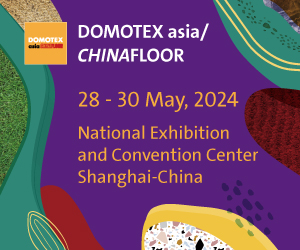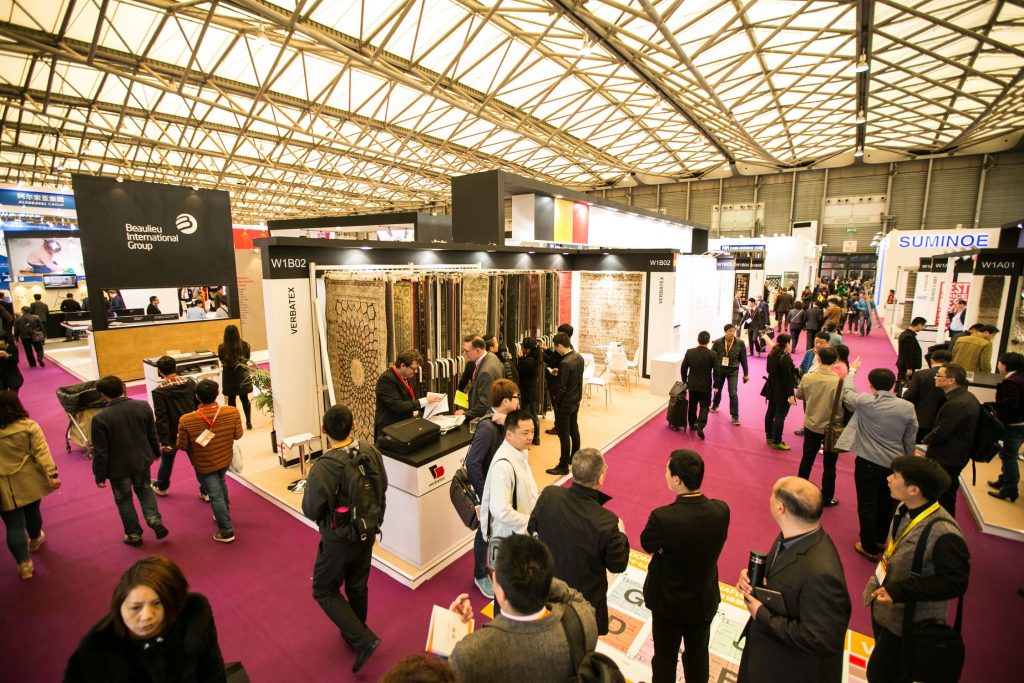 A great number of descriptions, words or dialects are used to describe acquirements Turks brought in to carpet art. This time, we are heading to a beloved land, Azerbaijan, a brother country, in whose name and our hearts there is the syllable, ‘can’ (pronounced like ‘John’), which means ‘dear or beloved’ in Turkish. Let’s have a closer look at the carpets of this beautiful country which reflect the reddish colors of pomegranate seeds, yellow tones of saffron, kehreba grapes and diverse colors of quince.
A great number of descriptions, words or dialects are used to describe acquirements Turks brought in to carpet art. This time, we are heading to a beloved land, Azerbaijan, a brother country, in whose name and our hearts there is the syllable, ‘can’ (pronounced like ‘John’), which means ‘dear or beloved’ in Turkish. Let’s have a closer look at the carpets of this beautiful country which reflect the reddish colors of pomegranate seeds, yellow tones of saffron, kehreba grapes and diverse colors of quince.
Azerbaijani carpets, acknowledged by UNESCO in 2010 as ‘Intangible Cultural Heritage’ has sadly been put in display at museums worldwide as being Caucasian, Iranian or even worse, Armenian.([1])
Azerbaijani tapises and carpets are pieces of arts renowned globally with their rich color diversity. There are various patterns on those tapises and carpets, some of which are masterpieces. Tapises and carpet weaving, one major element of globally recognized Azerbaijani cultural heritage dates back to long time ago. Azerbaijani carpets and tapises stand out with their top-quality, perfect composition and elegance as well as color richness and patterns of all sorts. Those which are woven with silk, silver or golden color yarns are priceless such as those woven with pearls or other jewels. Some are literally tantamount to paintings; They contain lyric and romantic patterns of flowers, human figures, animals, geometric shapes and miniature art. Weaving carpet in Azerbaijan is considered art, a way of life or a symbol. Patterns, color styles and compositions on the sides vary from region to region. One-of-a-kind carpets and tapises, woven by competent hands decorate famous museums such as Ermitage, Louvre or Topkapı Palace as well as the Textile Museum in Washington DC. One can easily notice salient ornamentations and delicate patterns of carpets identically put on paintings of European artists, miniature pieces and many other pieces that are of artistic value. (2)
Regional Classification of Azerbaijani Carpets
Azerbaijani carpets are classified into four groups in terms of technical and aesthetic specifications; Kuba and Şirvan; Gence and Kazak; Qarabag and Tabrîz .
Kuba and Şirvan Carpets
This group of carpets are sub-categorized into three; Kuba, Şirvan and Baku, named after where they are woven. The names of some are; Kuba, Hırdagülcici, Alçakgülcici, Karakaşlı, Leçedi, Gırız, Şirvan, Kabistan, Mereze, Pirhasan, Kurdemir, Balaken Baku, Gala and Fatmayı.
Despite the fact that they are technically similar, these three styles of Kuba-Şirvan carpets are considered ‘different carpets’ as Baku carpets are more complex in their composition compared to Şirvan carpets that involve more human, animal and household figures. Some figures and patterns on the borders are also displayed on architectural ornamentations. Kuba-Şirvan carpets have 160000-200000 knots per sqm. Those with around 400000 knots are much more precious. Harmoniously colored and woven with Turkish knot technique, Kuba-Şirvan carpets are enriched with tightly woven complex patterns and short but fluffy texture.
Similar to other classifications, carpets in this group are named after where they are woven. Gence carpets are Gence, Gadim Gence, Samuh, Çaylı, Şadlı, Kedabey and Çarıklı. These are locations to the West of Azerbaijan. Additionally, ‘Karakoyunlu’ carpets, woven at Çaykent and Gölkent are in this category. To some, these carpets are misinterpreted as ‘Armenian’, since these regions are close to Armenia.
Kazak carpet group have carpets of Kazak, Salahlı, Şilili and Kemerli regions. In the meantime, Azerbaijanis living in Georgia weave carpets of Borçalı, Karayazı, Koçhakan, Karacep and Karakoyunlu.
Despite technical similarities, Gence-Kazak carpets have different specifications in terms of their sizes. Gence carpets are relatively bigger than Kazak ones. Ornamental patterns on Gence carpets are more complex. At times, one can see carpets and hall rugs, associating carpets of Qarabag and South Azerbaijan. The composition of these carpets are comparatively more plain and geometrical to Kuba-Şirvan carpets. Gence-Kazak carpets come in more with yellow, green and orange colors. Knots on Kazak carpets are Gördes style. They are not too tight, with between 60000 to 120000 knots per sqm. Rarely can one happen to see carpets of up to 160000 knots per sqm.
Qarabag Carpets
In this category are Berde, Hankervanı, Çelebi, Boynuz and Deryanur, famous with Şedde Verni and Zili. Prominent masters of carpet art call them, “Aran carpets”. Nakhchivan carpets are in this group of carpets in terms of their technique and unique characterictics. Malıbeyli, Bahçedegüller and Gülyaylık carpets of Şuşa region are, too, in this category. Berde carpets of Qarabag started to be woven widely in the city of Şuşa as of XVIII century and the city became to be known as a carpet center, which consequently made Qarabag carpets known as Şuşa carpets. Carpets of Hanlık, Karakoyunlu, Kubadlı, Kurd and Behmenli are of Jabrayil origin.
Carpets aforementioned and the three regions (Qarabag, Şuşa and Jabrayil) are quite like one another in terms of technique and aesthetics. Qarabag carpets, however, slightly differ from others as they are diverse and geometrically patterned. Carpet, hall rug and prayer rugs, all in one ‘carpet team’, so to speak, are widely known across Qarabag. Qarabag carpets are relatively larger, sometimes up to 25 to 30 sqm. The number of knots are between 90000 to 160000, which sometimes go up to 200000 per sqm.
Composition of Qarabag carpets are relatively more complex than those of Gence-Kazak. Qarabag carpets have more of geometric figures of plants with amply used colors such as red, golden yellow, crimson and brown. “Gördes style” knots are bulky and tall, technically identical to Tabrîz carpets in terms of weaving specifications. Armenians who later came to Qarabag and Şuşa learnt carpet weaving from Azerbaijanis. As a matter of fact, Zedgenidze, a Georgian researcher who was in Şuşa in 1886 was quoted as saying the following truth: ”All the carpets are woven by Azerbaijani families; Armenians learnt that from them. ”
Tabrîz Carpets
Tabrîz carpets are very much like those of Qarabag, so much so that they can be categorized as one. Tabrîz , the capital city of South Azerbaijan is the center of carpet industry in north west Iran. Flat weaving are common on Tabrîz carpets. Additionally, one must mention the fact that skilled miniature artists of XVI century were in Tabrîz and that, in fact, contributed to the pattern advancement on carpets. Particularly as of the second half of XIX century, there happened a huge surge of interest in carpet weaving. However, Tabrîz carpets today and back then are quite different in that synthetic dies are used on carpets whose knots are generally thin. Medallion design is the commonly chosen design on recent Tabrîz carpets. (3)
To sump up…
Carpet weaving, a primary element of traditional Turkish arts and crafts has aways been a focus of interest across the world. Azerbaijani carpets have a distinguished place among Turkish carpets. Apart from having a historical and traditional value, the worldwide famous Azerbaijani carpets display the beauty and climate of Azerbaijan. (4) One can keep track of Azerbaijani carpets in recognized historical records such as Tarihu’t-Taberî, Mucemü’l-Buldan and Ahsenü’t – Tekasim(5)
Source:
([1])www.azerbaijans.com
(2)Latif Kerimov/Azerbaycan Halçacılığı (1985)
Asst.Prof. Mustafa Yıldırım/ Azerbaycan Halıları
(3)Hudu Surhay Mehmedoğlu, İ.R. EMİRASLANOĞLU,H.A. NECEFOĞLU, A.A. MÜRSELOĞLU, Nakışların Yaddaşı, Azerbaycan State Publications, Baku,1981 p.42; translated by Mustafa Yıldırım, “Motiflerin Dili”, Selçuk Uni. Faculty of Theology publications, edition:14, Konya 2002, p.230
(4)Yakut el-Hamavi, Mu’cemü’l-Buldan, Daru’l-kütübü’l-İlmiye Publications, Beirut,1990, p.156
(5) El-Makdisi, Ahsenü’t-Tekasim fi Marifeti’l-Ekalim,Mektebetü Medbuli, 3rd Ed., Cairo, 1991, p.380









